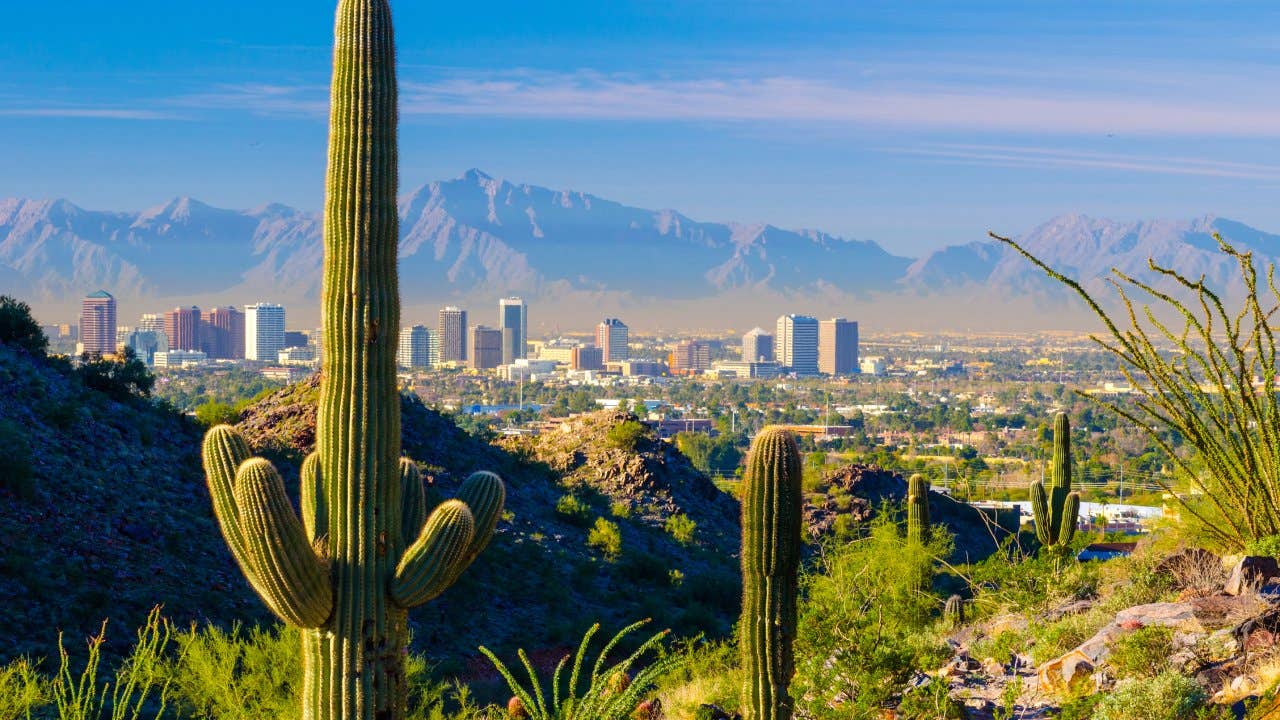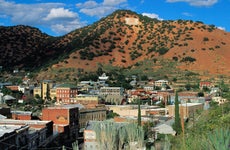Best places to live in Arizona in 2023

The Bankrate promise
At Bankrate we strive to help you make smarter financial decisions. While we adhere to strict , this post may contain references to products from our partners. Here's an explanation for .
There’s a lot to love about living in Arizona: gorgeous sunny days, scenic mountain vistas, peaceful desert serenity, more than 300 golf courses — and, of course, the Grand Canyon. And while the Grand Canyon State has a reputation as a great place to retire, it’s an equally desirable destination for young professionals who are buying their first home, too.
The state’s population surged throughout the pandemic, creating an overheated housing market that made buying here feel pretty difficult. However, the housing market in Arizona is calming. Median prices have dropped more than 7 percent since April of last year, according to Redfin data, so now is a good time to start thinking about where you might feel at home.
Arizona gives you a lot of options and a lot of ground to cover, stretching across 114,000 square miles. To narrow your search, begin your house hunting in these four cities, Bankrate’s best places to live in Arizona:
- Phoenix
- Tucson
- Flagstaff
- Lake Havasu City
1. Phoenix
Bigger isn’t just better in Arizona — it’s the best. Population-wise, Phoenix is the biggest city in the state by far, and you’ll find some big career opportunities here with employers like American Express, Honeywell, Banner Health, Intel and Bank of America. Whether you want to hike Camelback Mountain, enjoy an award-winning meal at Pizzeria Bianco or escape the heat with a cocktail at the nationally acclaimed Bitter & Twisted, Phoenix is a place where you can make the most of every day.
- Median home sale price: $440,000
- Cost of living: 104.7 (national average is 100)
- Average salary: $51,851
- Unemployment rate: 3.4%
- Total employees year-over-year: +4.3%
- Well-being: 66.3 out of 100
- Diversity: 64.5 out of 100
- Net migration: +1.4% population increase year-over-year
Why it stands out: The cost of living in Phoenix might be a few points above the national average, but the quality of life is above average too. It beats out the other three cities on our list when it comes to overall wellness and diversity, with a lower unemployment rate to boot. So, you’ll feel better, you’ll have more job opportunities and you’ll get to meet more kinds of people here. Win-win.
2. Tucson
Around two hours southeast of Phoenix, you’ll find a calming pace of life in Tucson. This city gets you closer to the sky — literally, at 2,389 feet above sea level. Look in any direction and you’ll see awe-inspiring views of one of the area’s five scenic mountain ranges: Rincon, Tucson, Santa Catalina, Santa Rita and Tortolita. It’s also home to the University of Arizona and makes an excellent place to either study or work from home: The city earned an honorable mention among our rundown of the best places to live for remote workers.
- Median home sale price: $340,000
- Cost of living: 102.1 (national average is 100)
- Average salary: $48,373
- Unemployment rate: 3.6%
- Total employees year-over-year: +3.0%
- Well-being: 65.7 out of 100
- Diversity: 62.5 out of 100
- Net migration: +0.8% population increase year-over-year
Why it stands out: Affordability. Tucson’s median home price is the only one on our list that’s lower than the national median ($388,800 as of April 2023). It’s a steal considering what you get: easy access to the great outdoors, a thriving arts community and a truly impressive food scene. In fact, Tucson is the first UNESCO City of Gastronomy in the U.S., thanks to its rich Mexican and Native American culinary traditions.
3. Flagstaff
Sweat it out on a summer hike and strap on your skis in the winter: Yes, you can ski in Arizona, specifically here in Flagstaff. This town’s mountainous location 80 miles southeast of the Grand Canyon means it gets plenty of snow in winter — local ski resort Arizona Snowbowl boasts it gets 260 inches of snowfall a year — and its high elevation makes it a top destination for Olympic training. Flagstaff offers the charm of a small town (population: 75,907) mixed with a restaurant and craft-beer scene (it’s home to eight different local breweries) that can rival a much bigger city.
- Median home sale price: $647,450
- Cost of living: 115.1 (national average is 100)
- Average salary: $53,036
- Unemployment rate: 3.9%
- Total employees year-over-year: +5.9%
- Well-being: 64.9 out of 100
- Diversity: 60.6 out of 100
- Net migration: -0.2% population decrease year-over-year
Why it stands out: Flagstaff may be on the small side, but it’s attracting some big numbers when it comes to employees. The city tops our list in terms of year-over-year employee growth. Some residents may be taking advantage of career opportunities at Northern Arizona University, Flagstaff Medical Center and W.L. Gore & Associates — the city’s three biggest employers — but they could just as easily be working at small businesses. The city has made a name for itself as a place where local entrepreneurs can thrive.
4. Lake Havasu City
Lake Havasu City is a tourist destination that attracts more than 835,000 people each year, but this is more than just a vacation spot. Located on the border with California, this town is an outdoor lover’s paradise, with hiking trails and loads of boating, fishing and water adventures on the lake (actually a reservoir created by Parker Dam). You won’t find the big-city action of Phoenix here, but that’s part of the appeal for relaxed vacationers — and the one-third of its population that’s 65 years or older.
- Median home sale price: $467,500
- Cost of living: 143.4 (national average is 100)
- Average salary: $36,529
- Unemployment rate: 3.9%
- Total employees year-over-year: +4.7%
- Well-being: 65.3 out of 100
- Diversity: 40.0 out of 100
- Net migration: +2.8% population increase year-over-year
Why it stands out: While the cost of living is high in Lake Havasu City, its well-being score is impressive. We’re not the only ones who’ve noticed, either, as the town’s net migration ranked the highest on our list (and double that of much bigger Phoenix) — a clear indication that you’ll be joined by plenty of other newcomers if you decide lakeside living is the right move for you.
Methodology
Choosing the best place to live is a very personal decision: It all depends on you and your individual circumstances. To help you decide, we’ve utilized data across five important categories to determine the Bankrate Best Places to Live lists: well-being, job markets, affordability, migration and diversity.
We sourced data from several trusted sources, including Sharecare, the U.S. Bureau of Labor Statistics, the Council for Community and Economic Research and the U.S. Census Bureau.
Below, find the formula that we utilized to calculate the weighted sum score for each city:
For more information about our data sources, what the individual data points mean, how they are weighted and more, visit the full Bankrate Best Places to Live Methodology.
Related Articles



